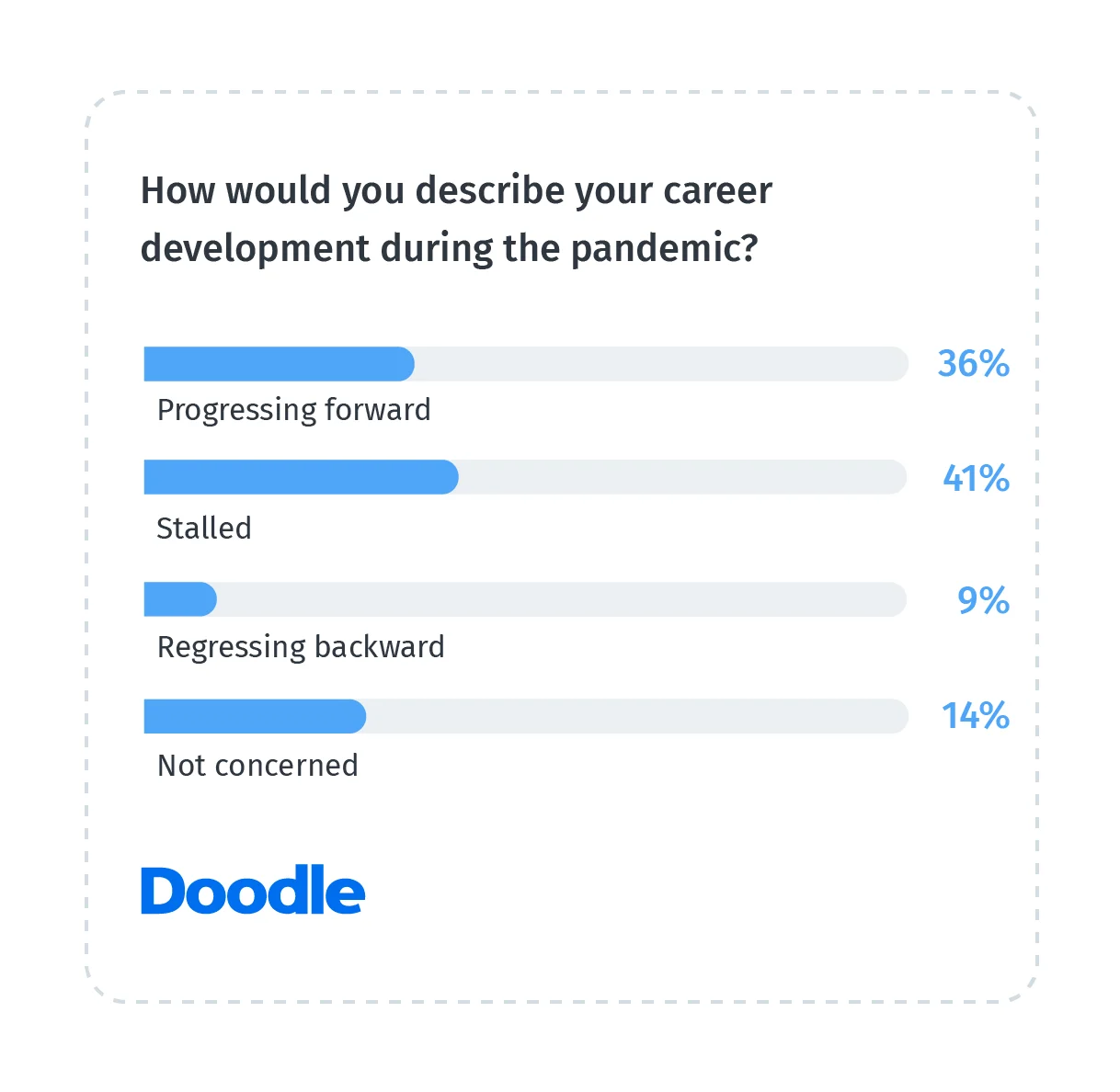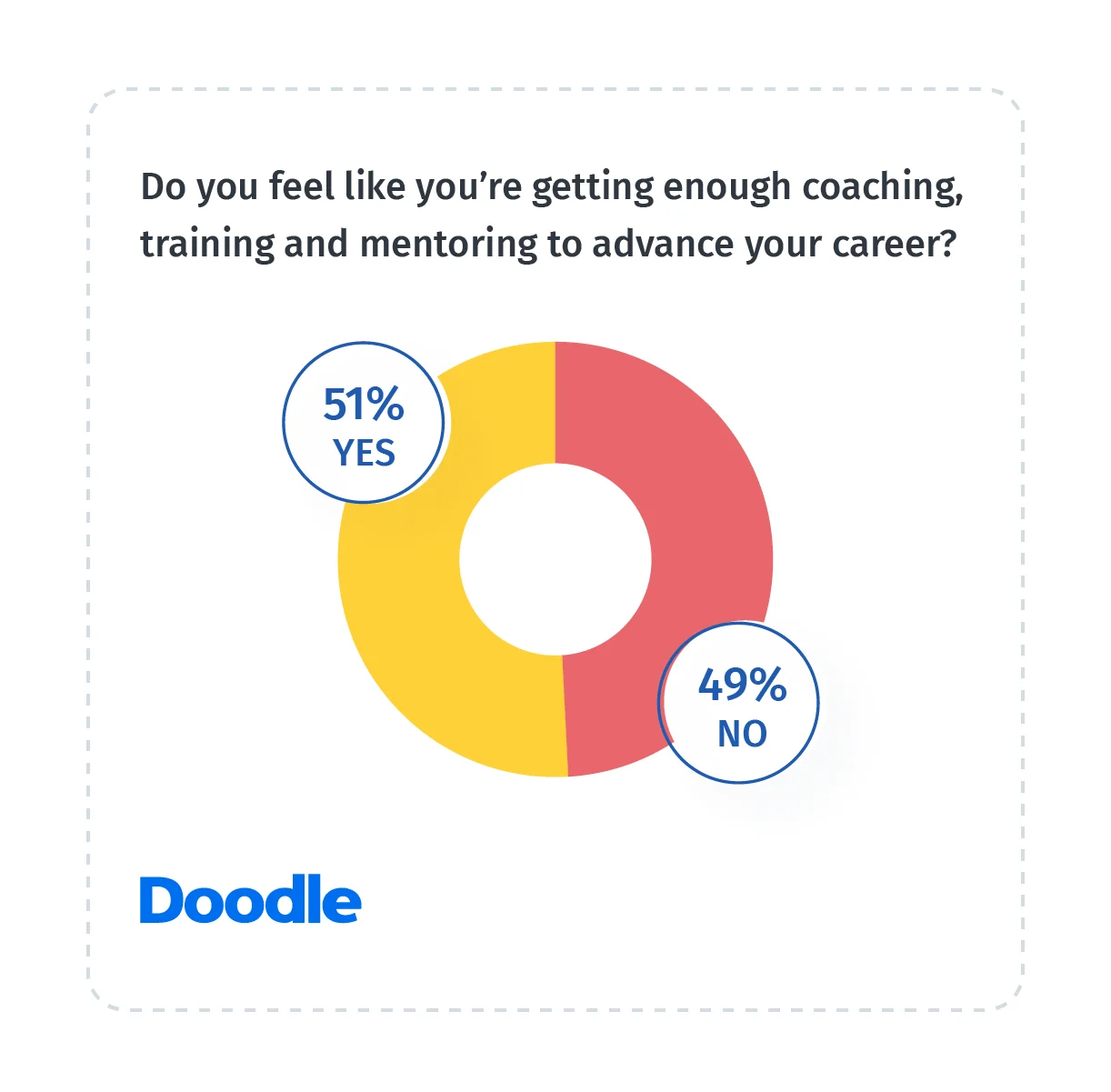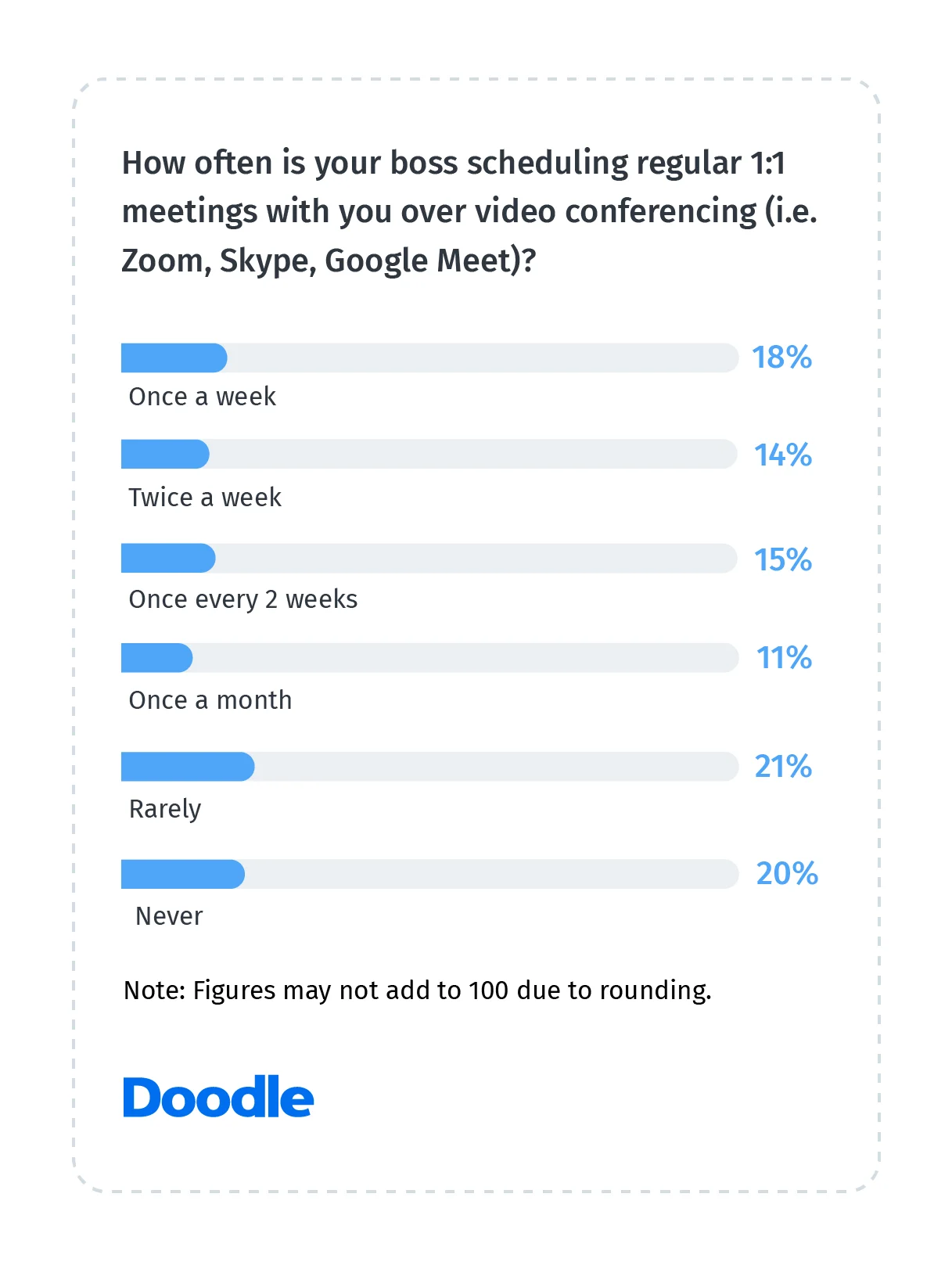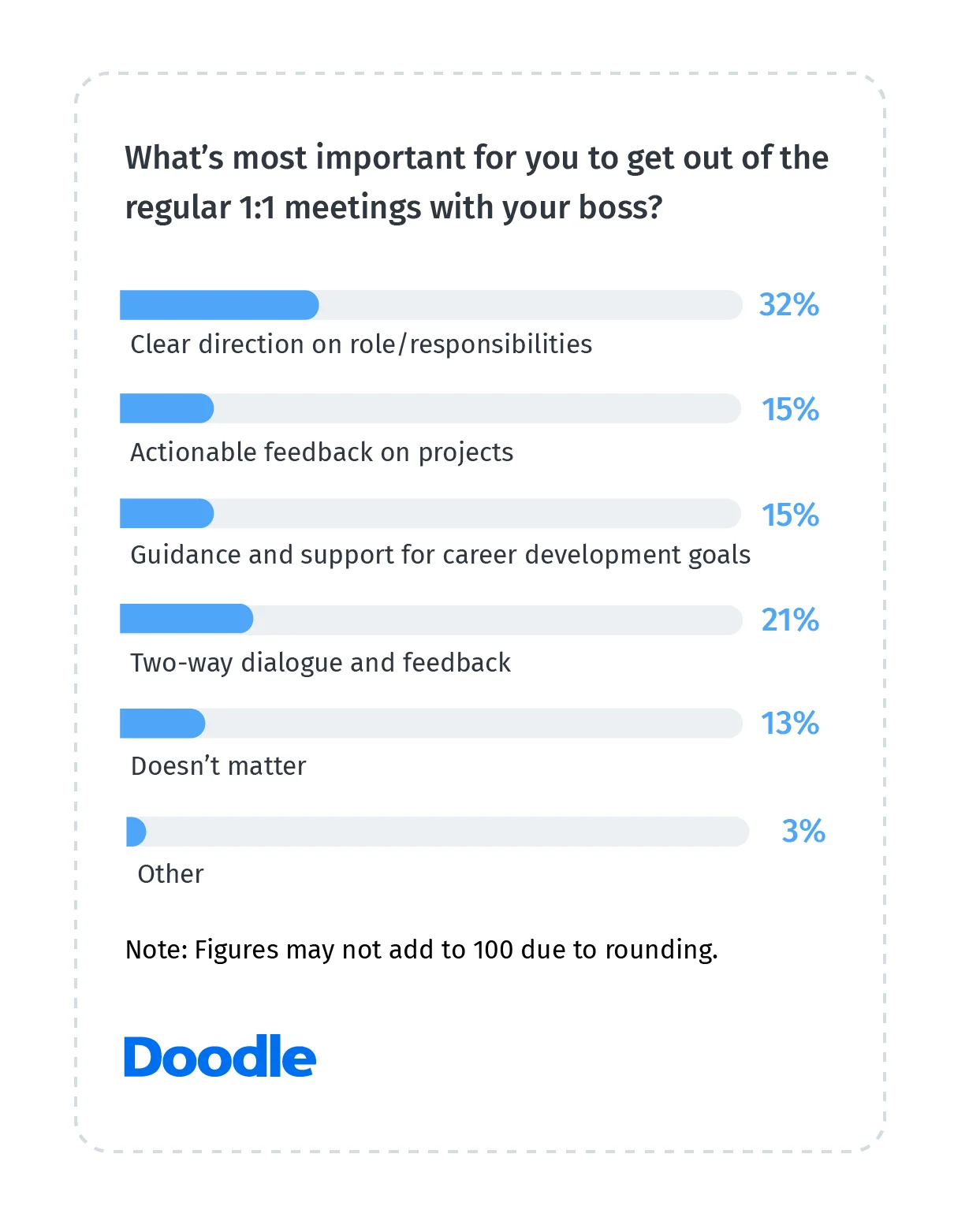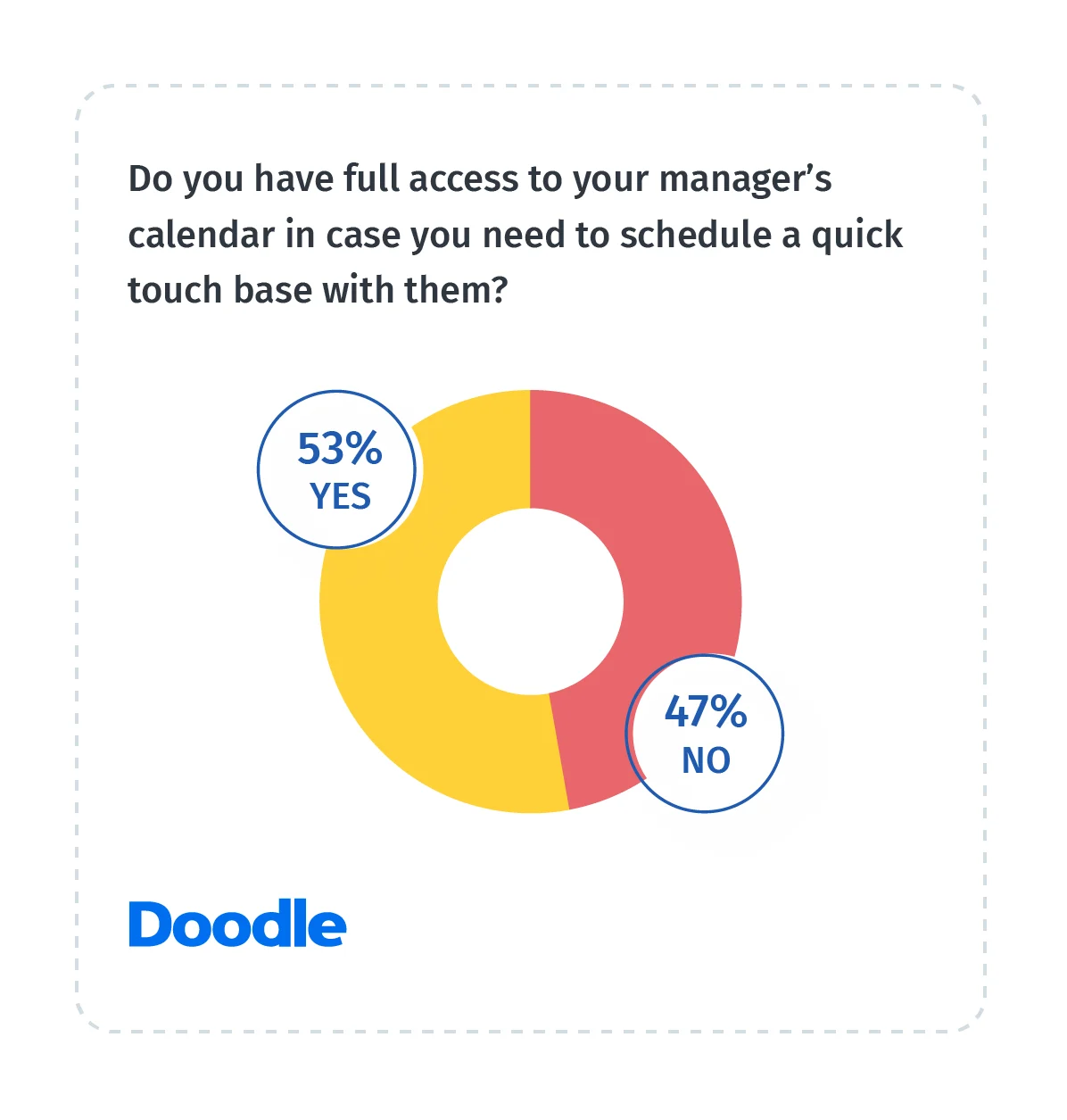Career Development in a Pandemic
Employees are an organization’s lifeline. They bring talent, ideas, collaboration and innovation. Learn how to use working differently to your advantage.
In times of crisis, like the one we’re all stuck in right now, career development is usually the last thing on people’s minds.
For employees, the idea of bringing up their career growth and advancement goals can feel scary. What if they’re seen as being ungrateful? What if they’re rocking the boat and putting themselves in the line of fire for a potential layoff? On top of that, the demands to meet performance expectations and hit their KPIs is constantly lurking in the background, like a bad date. And let’s not forget the immense pressure to keep customers happy, engaged and loyal.
For businesses, most of which have been in crisis mode since March, career development tends to get pushed to the side in times of crisis. The bigger priority, in the executive team’s minds, is to cut costs (wherever possible), streamline operations and keep the business afloat.
Both sides – employees and employers – have valid reasons for feeling that way and making these choices. But I would argue the exact opposite. It’s in times of crisis when career development and mentorship opportunities are most necessary.
To understand the impact of the coronavirus pandemic on career development, we surveyed more than 1,000 employees in the US. What we uncovered was surprising, disappointing and interesting – yes, that’s a lot of emotions to come out of data. But you’ll see what we mean when you dig deeper into the findings and trends from our "Career Development in a Pandemic” research study.
6 Stats You Need to Know
1: 41% of employees say their career development has stalled during the pandemic and 9% say their careers have regressed.
When you look at these two statistics, they paint a pretty grim picture. Let’s unpack these two statistics to see what could be causing them.
Layoffs and unemployment have become an unfortunate reality of the coronavirus pandemic. According to data from the US Bureau of Labor Statistics, the U.S. unemployment rate shot up from 3.8 percent in February 2020 – among the lowest on record in the post-World War II era – to 13 percent in May 2020. It’s also estimated that 42 percent of pandemic-induced layoffs will result in permanent job loss.
2: 49% of employees say career development, mentorship and training is sorely lacking during the pandemic.
The benefits of mentoring are numerous. Ongoing mentoring can lead to greater career success, including promotions, raises and learning opportunities. And it’s not just employees who benefit from mentoring. Organizations that embrace and offer mentoring see higher levels of engagement, satisfaction, retention and knowledge-sharing.
So with both employees and organizations benefiting from mentoring, I can’t help but wonder why 49 percent of the respondents in our study feel they aren’t getting enough coaching, training and mentoring to advance their careers during the pandemic. There’s clearly a disconnect between what employees expect and want – and what their employers are offering.
As an employee, one-to-one meetings are a great way to drive positive outcomes in your career. These meetings can help both the employee and the manager get to know each other better, establish a regular communication cadence and build mutual trust. But both parties – the employee and the manager – have a joint responsibility to stick to a regular schedule of one-to-one meetings.
As a manager and mentor, one of your responsibilities is to have recurring one-to-one meetings with your employees (and mentees). We recommend that you keep these meetings to a monthly cadence and limit them to 30 minutes in duration. That will allow the discussion to be laser-focused on mentorship and coaching, rather than digressing into other topics related to ongoing work and projects. There are other meetings where those topics can be discussed.
3: Only 18% of employees say their boss schedules weekly one-to-ones over video with them.
With the pandemic still in full swing, being able to engage in quality conversations at work has become especially important. On the one hand, you have millions of remote workers who have been shut off from the daily interactions and experiences they once enjoyed, resulting in social isolation, loneliness and disconnection.
On the other hand, employees now find themselves being invited to and participating in more meetings than ever. In Q2 2020, for example, the number of virtual one-to-one meetings grew by 136 percent from the previous quarter. More meetings means being present and ‘on’ more, which just adds to the pressures employees are already feeling and facing. It’s all incredibly exhausting and draining.
One-to-one meetings are an essential part of an employee’s career development. These meetings provide employees with direction on their role and responsibilities, guidance on their professional goals, feedback on projects and overall support. These meetings are also essential for managers to build and maintain highly engaged and satisfied teams. So the fact that only 18 percent of the respondents said their boss schedules weekly one-to-one meetings over video with them is disappointing, to say the least.
4: 47% of employees would like their boss to have an active role in their career growth.
When it comes to what employees like best about their one-to-one meetings, 32 percent want clear direction on their role and responsibilities and 15 percent want guidance and support for their career development goals. This means 47 percent of the respondents value the role their boss plays in their individual growth.
This finding is a beacon of light and hope. It proves that career development and growth cannot happen in a silo. It requires the involvement and investment from both the employee and their manager.
If managers don’t provide clear direction to their employees on the expectations for their role and the core responsibilities they will perform on a daily basis, that can lead to a myriad of problems. For one, employees could end up doing work incorrectly, which then must be redone. Not only does that hinder the employee’s overall productivity, but it can also lead to longer working hours, more stress and eventual burnout. Plus, a lack of role clarity can affect employees’ confidence levels and motivation, which could then cause them to pull back and disengage from their managers, teams and colleagues. None of these are desirable effects.
How to Run Effective 1:1s Focused on Career Development
5: 47% of employees don’t have access to their manager’s calendar in case they need to schedule a quick touch base with them.
Everything is uncertain right now. Employees are stressed and full of questions about their roles, their personal growth and career advancement.
So, not being able to connect with their bosses to bring up these questions – or chart a path that will allow them to achieve their long-term professional development goals – will surely make them feel frustrated, more stressed, less trusting and disengaged. This is not what any boss, and any organization, should allow to happen because it could lead to the employee quitting to take a job at another company that values, supports and empowers their career growth plans.
Something as simple as sharing a calendar can be beneficial to both employees and their managers. It can break down the walls and barriers that often make it difficult for employees to connect with their managers.
By making their calendars visible and accessible to their teams, managers can:
6: To book one-to-one meetings with their bosses, 66% of employees send a note (via email or communication tool), ask for availability, wait for a response and then send a calendar invite.
When we asked the respondents how they book one-to-one meetings with their boss, a whopping 66 percent said they send a note (via email or via communications tools like Slack, Yammer and Jive), ask for availability, wait for a response and then send a calendar invite. This is a very slow and outdated process that typically requires an average of 30 emails and costs the meeting organizer, at the very least, 30 minutes of their time.
Despite the increasing popularity of workplace collaboration tools like Slack and Microsoft Teams, only 13 percent of the respondents said they use these communication tools to book one-to-one meetings with their boss. Additionally, just 8 percent said they use an online scheduling tool.
These findings are surprising for two reasons. First, online scheduling tools have been lauded repeatedly in the news for helping remote teams make better use of their time. Second, many scheduling tools have been integrated into the Slack platform. Many integrations, for example, Doodle's Zapier integration, can take care of all their scheduling needs – from creating polls to adding time options to sharing the poll with others and booking the meeting in a matter of seconds.
Constantly switching between tasks, like checking schedules and sending emails about availability while trying to achieve professional goals, can make employees 80 percent less productive. Being unproductive and dealing with frustratingly repetitive or time-consuming tasks like scheduling are two of the leading causes of employee disengagement. Disengaged employees are not only a drain on your finances and morale, but they’re more likely to take time off sick and leave your firm.
How Managers Can Schedule 1:1s With Employees the Right Way
To learn more about the role of 1:1 meetings in talent development, download our full research study for free.





